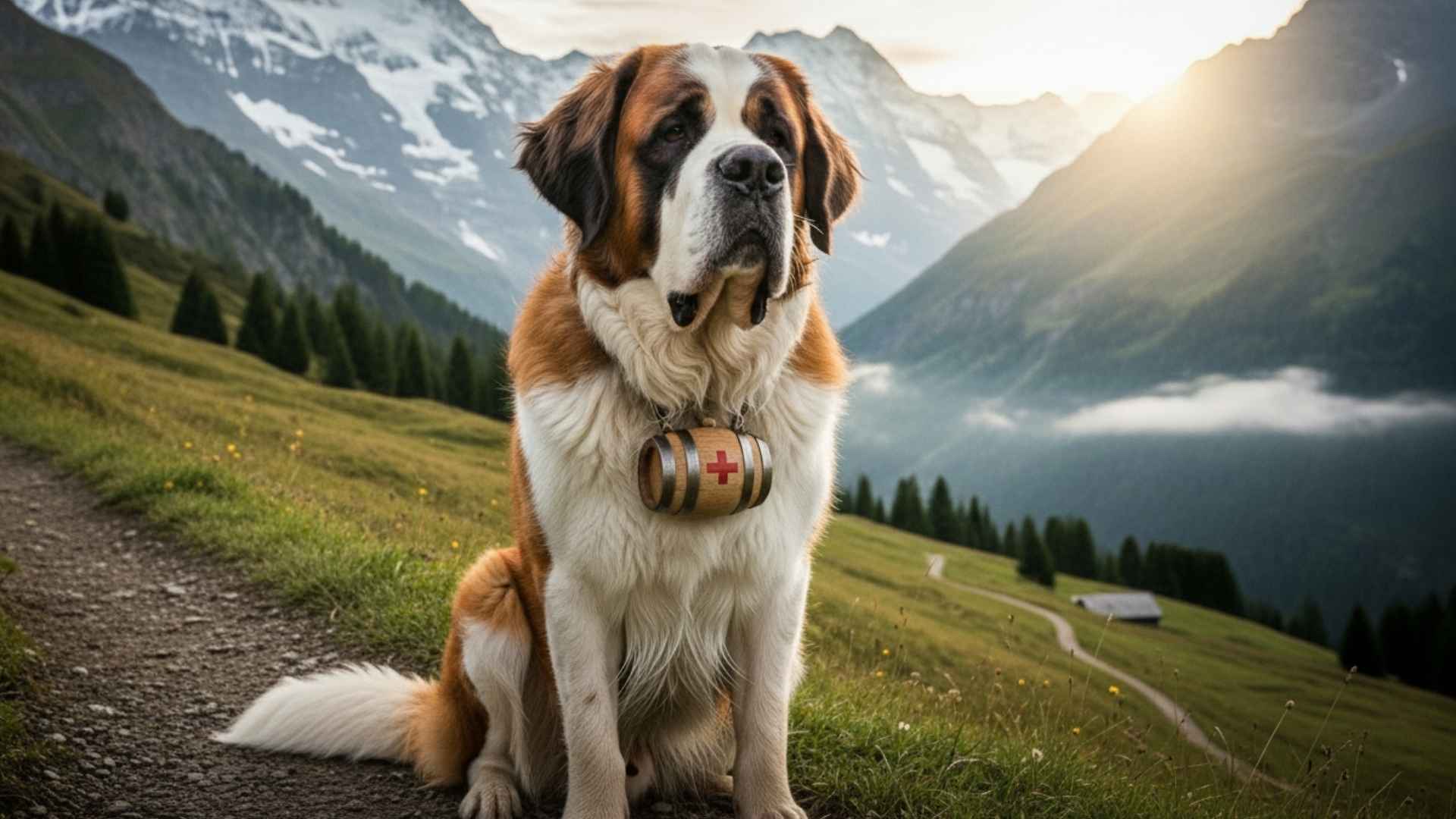Did you know that larger dogs tend to live shorter lives than smaller ones? According to a study, every 4.4 pounds of body weight can reduce a dog’s lifespan by about a month. It’s a tender reminder that even the biggest hearts often shine brightest for a shorter time.
Dogs fill our homes with laughter, loyalty, and unconditional love. From the wag of a tail to the nuzzle of a nose, they leave pawprints that never fade. Their time with us may be brief, but their impact lasts a lifetime.
Each breed brings its own unique blend of charm, courage, and warmth. Yet, some of our most beloved companions are known for living fast and loving hard.
Their shorter lifespans don’t make them any less special — they make every moment more meaningful.
So, let’s celebrate these large, cherished canine companions who teach us the beauty of love, no matter how long it lasts.
Beloved Dog Breeds With Shorter Lives
1. Dogue de Bordeaux
The Dogue de Bordeaux, often called the French Mastiff, is a powerhouse of muscle and heart. Sadly, their massive build contributes to a shorter lifespan, averaging 5–8 years.
PetMD warns that this breed is prone to heart issues like dilated cardiomyopathy, hip dysplasia, and breathing problems due to its short muzzle and large chest.
Originating from France, this ancient guardian was bred for protection and hard work. Their wrinkled, expressive faces demand consistent skin care to prevent infections. A nutrient-rich diet that supports joint health and moderate daily exercise helps maintain their strength without overexertion.
Preventive Care & Owner Tips:
Schedule regular cardiac and joint screenings.
Keep folds clean and dry.
Opt for low-impact walks to avoid overheating.
Gentle yet fearless, the Dogue thrives in calm homes where companionship is constant. Their loyalty runs deep, making them perfect for experienced owners who appreciate devotion over duration.
2. Great Dane
Known as the “gentle giant,” the Great Dane combines elegance with immense stature—but that size comes at a cost.
These dogs are predisposed to bloat (gastric torsion), cardiomyopathy, and joint degeneration, which can shorten their lives to 7–10 years. Their large frame demands careful weight management to keep pressure off their bones and heart.
Purina adds that Great Danes hail from Germany, originally bred for hunting boar and guarding estates. They require soft bedding for joint support, balanced meals rich in lean protein, and moderate daily activity. Their short coat needs minimal grooming, but attention to dental hygiene is a must.
Preventive Care & Owner Tips:
Feed smaller, more frequent meals to reduce bloat risk.
Provide orthopedic bedding.
Keep vet visits consistent for cardiac health.
Despite their imposing size, Great Danes are affectionate couch companions. They flourish in spacious homes filled with love and gentle leadership.
3. Irish Wolfhound
The Irish Wolfhound may tower over most breeds, but behind its majestic size lies a fragile health balance. Their rapid growth rate strains their hearts and bones, making them prone to osteosarcoma and heart disease. Lifespans average 6–8 years—short, yet filled with deep loyalty.
AKC says that originating from ancient Ireland, these hounds once chased wolves and guarded clans. Their wiry coats require weekly brushing, while high-quality, slow-growing diets protect developing joints. Light, steady exercise helps maintain muscle tone without adding stress.
Preventive Care & Owner Tips:
Annual heart checkups are essential.
Avoid overfeeding growing puppies.
Keep exercise gentle, especially during growth spurts.
Calm, affectionate, and intuitive, the Irish Wolfhound fits best in homes with patient owners and room to roam. They thrive on gentle companionship and reward love with quiet devotion.
4. Saint Bernard

The Saint Bernard, famed for its heroic alpine rescues, is a symbol of strength and sweetness. Yet, their massive size predisposes them to heart problems, hip dysplasia, and bloat, often shortening their lifespan to 8–10 years. Their dense coat and heavy build also make them prone to heat exhaustion.
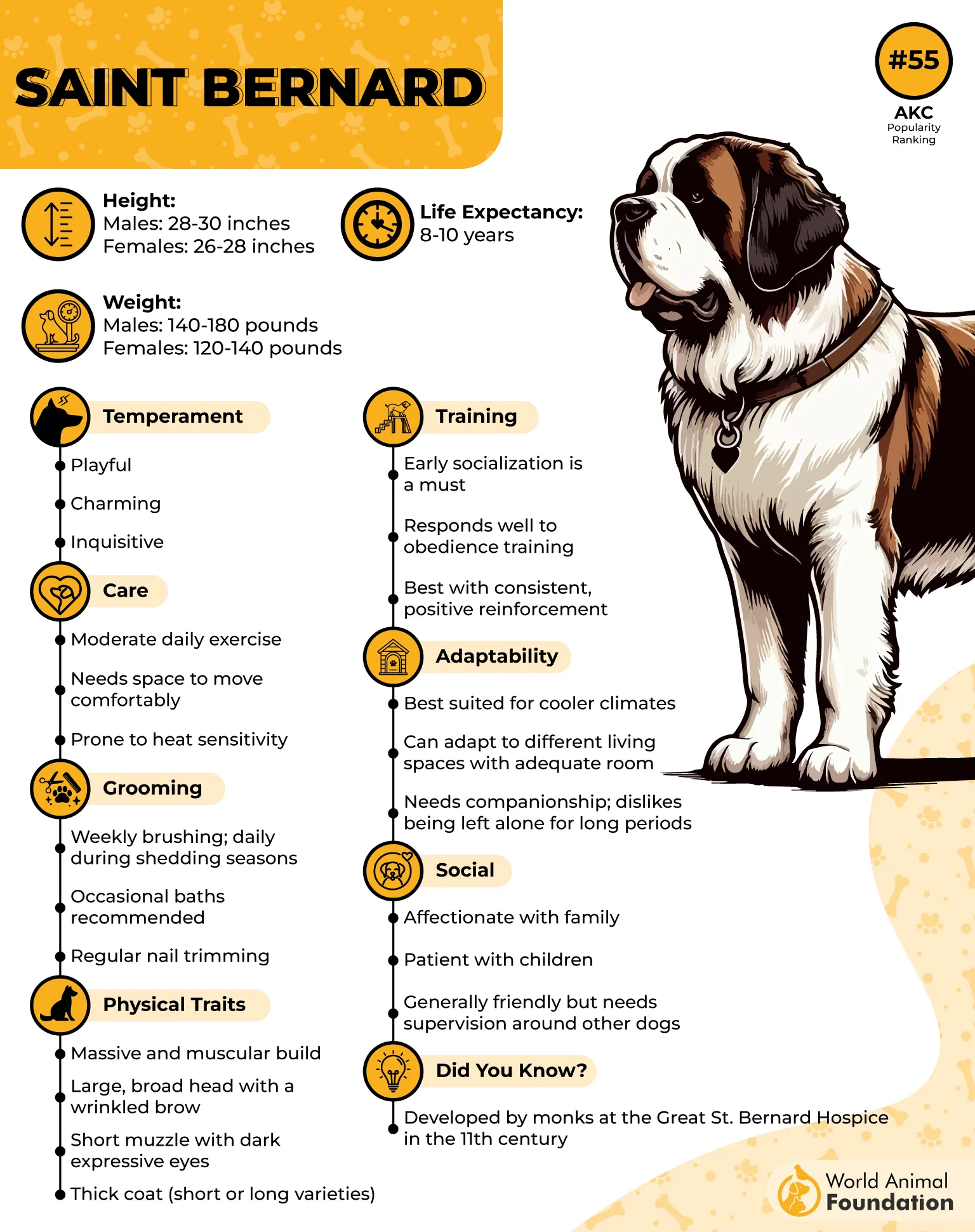
Hailing from the Swiss Alps, these dogs were bred to endure freezing temperatures while saving stranded travelers. Grooming their thick coat is essential to prevent matting and skin infections, while their diet should balance lean proteins and joint-supporting nutrients.

Preventive Care & Owner Tips:
Brush coat 2–3 times weekly.
Avoid excessive heat and high-impact exercise.
Monitor for signs of bloat and joint pain.
A Saint Bernard’s gentle nature shines brightest in family homes where love flows freely. They’re calm protectors and loyal cuddlers, happiest surrounded by warmth and affection.
5. Bullmastiff
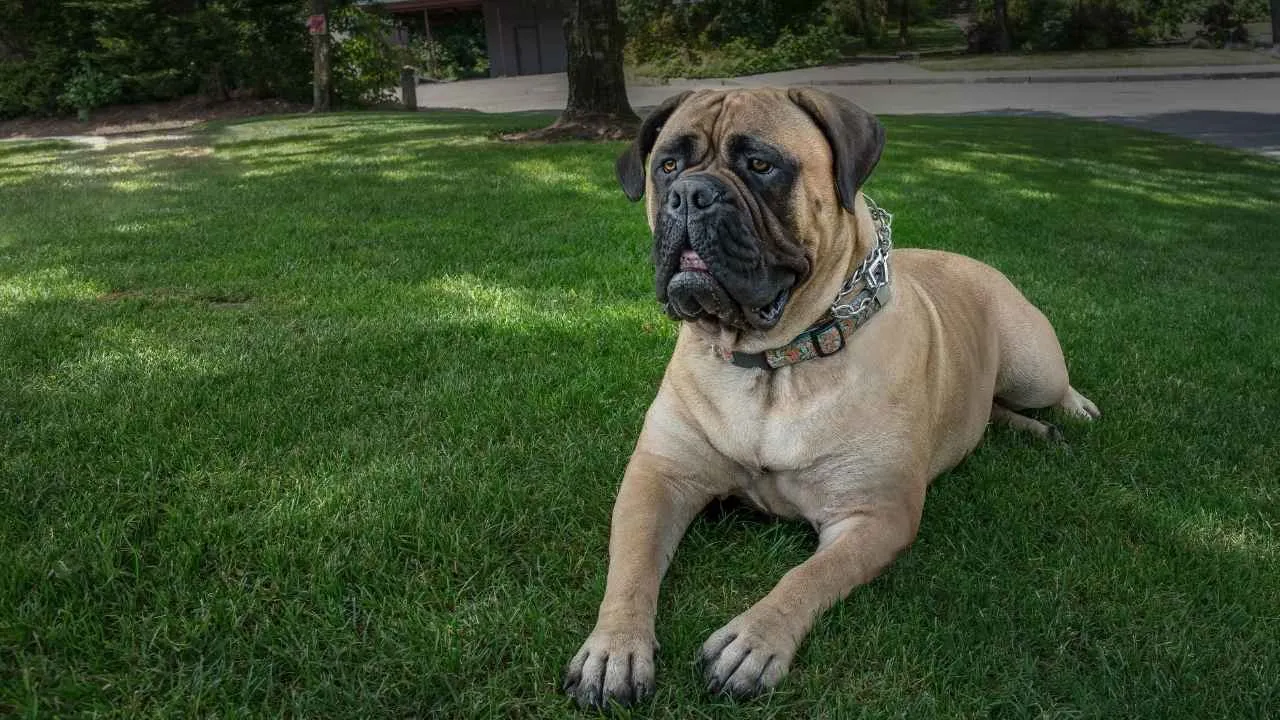
The Bullmastiff is a blend of power and poise, bred to guard estates with silent confidence. However, their large frame and genetics predispose them to heart disease, cancer, and hip dysplasia. Their average lifespan ranges between 7–9 years, making proactive care essential.

Originating in England, Bullmastiffs thrive on balanced routines—moderate exercise, nutritious meals, and regular vet visits. Their short coat is easy to maintain, though facial folds and ears need routine cleaning to prevent infections.
Preventive Care & Owner Tips:
Maintain a lean body weight.
Clean facial folds regularly.
Schedule early heart and joint screenings.
Courageous yet affectionate, Bullmastiffs are perfect companions for calm, confident owners. They flourish in peaceful homes, where gentle leadership and affection define the bond.
6. Bernese Mountain Dog

The Bernese Mountain Dog is a breathtakingly beautiful working breed, known for its tricolor coat and kind eyes. Sadly, their genetics predispose them to cancer, particularly histiocytic sarcoma, which shortens their lifespan to around 7–9 years. Their size also brings joint issues and heart concerns.
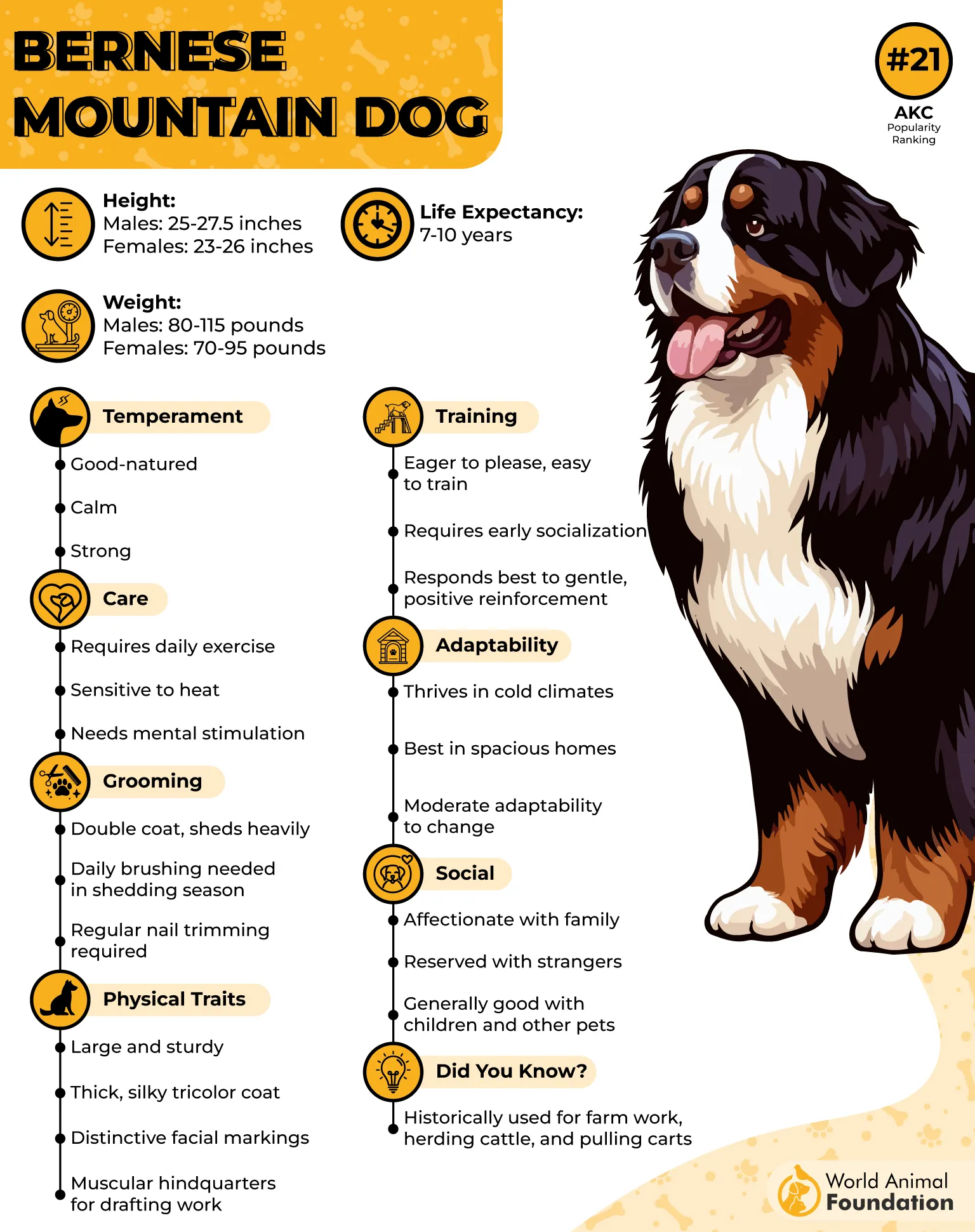
Originating from the Swiss farmlands, these dogs were bred to pull carts and herd livestock. Regular grooming keeps their thick double coat healthy, while a diet rich in antioxidants and omega-3s supports immune and joint function. Gentle daily exercise suits their slow, steady nature.
Preventive Care & Owner Tips:
Prioritize cancer screenings after age five.
Maintain coat health with weekly brushing.
Provide joint supplements early.
Affectionate, intelligent, and patient, Berners make wonderful family dogs. They’re happiest in cool climates, surrounded by love, laughter, and open spaces.
7. Bulldog

Compact, courageous, and full of character, the Bulldog wins hearts everywhere—but their adorable wrinkles come with challenges.
Their short snouts make breathing difficult, especially in heat, and they’re prone to skin infections, joint issues, and heart disease. Lifespans average 8–10 years, though good care can extend it.
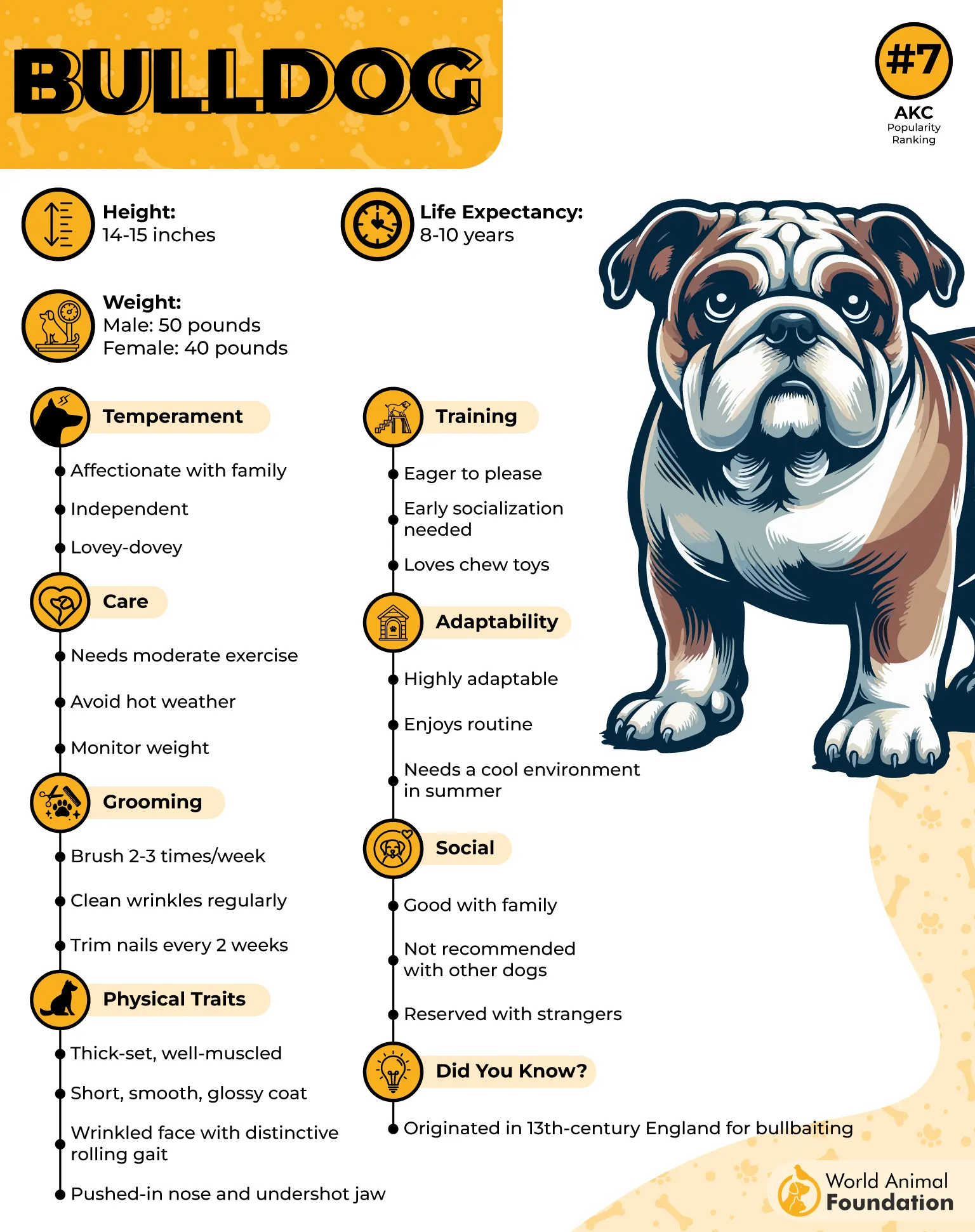
Descended from ancient bull-baiting dogs, today’s Bulldogs prefer naps to battles. They need gentle walks, cool environments, and careful skin maintenance. A diet low in fat but high in nutrients helps them stay healthy without adding strain.
Preventive Care & Owner Tips:
Avoid overheating; Bulldogs are heat-sensitive.
Clean wrinkles daily.
Opt for vet-approved, weight-control diets.
Underneath that tough exterior is a tender soul who thrives on affection. The Bulldog’s steady devotion and humorous charm make them an unforgettable companion for loving, attentive owners.
FAQs
Why do large dog breeds often live shorter lives?
Large dog breeds generally have a shorter life expectancy because their bodies age faster due to their sheer size and rapid growth. This accelerated growth increases the risk of heart conditions, joint problems, and various health issues such as canine hip dysplasia and bone cancer. Their deep chests and large size can also put extra strain on vital organs.
Can good care extend the lifespan of these breeds?
Absolutely. A balanced diet, regular exercise, and proactive monitoring for early signs of health concerns like arthritis, spinal disease, or orthopedic issues can make a significant difference. Regular vet visits and support from breed clubs help detect potential health issues early, improving both lifespan and quality of life.
Are these short-lived breeds good with children and families?
Yes, despite their health struggles, many of these breeds with the shortest lifespans are affectionate, gentle, and loyal. They often make excellent family dogs and devoted companions, forming deep bonds with both kids and adults. With love and care, they can be some of the most rewarding furry friends you’ll ever have.
Conclusion
Life with our devoted companions may feel fleeting, but every wag and nuzzle makes it worthwhile. While large breeds often have a short average life expectancy due to heart conditions and orthopedic issues, their love and loyalty are unmatched.
Even other breeds like the Neapolitan Mastiff, Cavalier King Charles Spaniel, and American Bulldog face common health concerns such as canine hip dysplasia, bone cancer, and joint problems—reminding prospective dog owners that care and awareness play a big role in longevity.
With a balanced diet, regular vet checks, and attention to early signs of health issues, you can help your furry friend live their happiest, healthiest life. Celebrate every moment—and if you’re considering adoption, let love, not life expectancy, lead your heart.


